#Olympia restaurant
Text
From the drawer of memories. Have tasty Friday guys! Visit us at any of our three locations: Marvin Rd ☎️(360)456-8222 Yelm Hwy ☎️(360)459-0818 Pacific Ave ☎️(360)491-8244 or 📲 Place your order online to start your order today! direct.chownow.com/order/25326/locations
From the drawer of memories. Have tasty Friday guys! Visit us at any of our three locations: Marvin Rd ☎️(360)456-8222 Yelm Hwy ☎️(360)459-0818 Pacific Ave ☎️(360)491-8244 or 📲 Place your order online to start your order today! direct.chownow.com/order/25326/locations
0 notes
Text
More on the Olympia Restaurant 1960
July 1960
Almonte Fire Brigade was asked to send a pumper to help combat a fire in the business section of Carleton Place early Monday morning. The siren blew here at 4.10 and the engine made the run in record time. The fire destroyed a restaurant, barber shop and private garage on Bridge Street, the main thoroughfare of the neighbouring town.
The Olympia Restaurant, in the kitchen of which it…

View On WordPress
0 notes
Text
Culinary Delights: Discovering the Best Restaurants in Washington State
July 11, 2023

Art by, Shawna Loree
Washington state is not only renowned for its breathtaking natural beauty but also for its vibrant and diverse culinary scene. From farm-to-table eateries showcasing the state's fresh produce to fine dining establishments pushing the boundaries of gastronomy, Washington offers an array of exceptional restaurants to satisfy any discerning palate. In this article, we will embark on a culinary journey to explore some of the best restaurants in the Evergreen State.
Canlis (Seattle): Nestled on a hilltop in Seattle, Canlis has long been a beacon of elegance and sophistication. This iconic fine dining establishment offers breathtaking views of the city skyline and a meticulously crafted menu that emphasizes Pacific Northwest ingredients. With a blend of classic and contemporary dishes, Canlis promises an unforgettable dining experience.
The Herbfarm (Woodinville): For a truly immersive culinary adventure, The Herbfarm in Woodinville is unparalleled. This farm-to-table restaurant takes the concept to new heights by incorporating freshly harvested herbs and seasonal produce into every dish. Each meal is a multi-course extravaganza that showcases the flavors and aromas of the region, accompanied by carefully selected wines from their extensive cellar.
The Whale Wins (Seattle): Helmed by renowned chef Renee Erickson, The Whale Wins in Seattle's Fremont neighborhood captures the essence of rustic, wood-fired cooking. The menu celebrates the bounty of local farmers, featuring seasonal vegetables, fresh seafood, and succulent meats. With its warm and inviting atmosphere, The Whale Wins is the perfect spot for a relaxed yet exceptional dining experience.
The Herbfarm (Woodinville): An institution in Washington's culinary scene, The Herbfarm consistently delivers a memorable experience that combines gastronomy with education. Guests embark on a nine-course journey showcasing the region's seasonal ingredients, thoughtfully paired with wines, while being guided through the flavors and stories behind each dish.
Salish Lodge Dining Room (Snoqualmie): Perched atop Snoqualmie Falls, the Salish Lodge Dining Room offers a one-of-a-kind dining experience with panoramic views of the cascading waterfalls. The menu features Pacific Northwest-inspired cuisine, highlighting locally sourced ingredients. From delectable seafood to mouthwatering steaks, the dishes here reflect the essence of the region's culinary heritage.
Hogstone's Wood Oven (Orcas Island): Located on Orcas Island, Hogstone's Wood Oven is a hidden gem that epitomizes farm-to-table dining. The restaurant's commitment to sustainability is reflected in their seasonal menus, which showcase ingredients sourced from their own farm and local producers. From their wood-fired pizzas to inventive vegetable-focused dishes, Hogstone's delivers culinary delights that celebrate the island's bounty.
The Dining Room at Alderbrook Resort (Union): Nestled on the shores of Hood Canal, The Dining Room at Alderbrook Resort offers a captivating dining experience with stunning waterfront views. Their menu highlights Pacific Northwest flavors, featuring fresh seafood and locally grown ingredients. With an elegant ambiance and impeccable service, this restaurant is perfect for a special occasion or a romantic evening.
Washington state's culinary landscape is as diverse as its natural surroundings. From upscale fine dining establishments to charming farm-to-table eateries, the best restaurants in Washington offer a blend of creativity, local ingredients, and a celebration of the region's culinary heritage. Whether you're a local or a visitor, exploring these culinary destinations will undoubtedly leave you with a lasting appreciation for the exceptional gastronomy found in the Evergreen State.
#shezanenigma#shawna loree#wildgirl#adventure#travel#wanderlust#washington#seattle#tacoma#olympia#space needle#pacific northwest#dining#restaurants#culinary#wild girl
0 notes
Text
Foodie Adventures Beckon in Makati!
The Old Swiss Inn Restaurant at Somerset Olympia Makati is a great place to kick-start your day with a complimentary breakfast; the themed décor really adds to the charm, while there are plenty more culinary discoveries to be found within easy reach of this serviced residence in Makati as well.
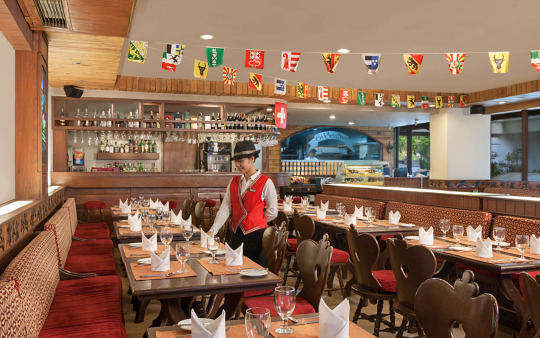
#Serviced Residence Makati#Somerset Olympia Makati#OldSwissInn Restaurant#CulinaryDiscoveries#DeliciousFoods
0 notes
Text
Hiding on a Greek island - part 2
Massimo, a 40-year-old ex-special forces operator, had spent his career as a bodyguard for high-level individuals. He was dedicated to protecting his clients and had even saved Eduardo's life after he was shot. they When found themselves in danger, they sought refuge on a secluded Greek island, where they hid in a house.

However, life on the island posed new challenges for Massimo. His usual active lifestyle, focused on fitness and staying in shape, was disrupted. With no gym on the tiny island and the house situated on a hard-to-reach hill, exercise became a rare occurrence for him. On top of that, Eduardo, who was disabled at the time, relied on Massimo for transportation, making it difficult for him to prioritize his own well-being.
To add to the problem, the couple who cared for them, Stavros and his wife, provided ample amounts of delicious food. Eduardo's waistline began to expand rapidly without his usual exercise routine, and Massimo's chiseled abs were concealed beneath a layer of fat. Both men found solace in eating, with Massimo's frustration and boredom driving him to consume even more. Eduardo jokingly commented on his bodyguard's growing waistline, further highlighting the issue.

Eduardo's blossoming romance with Alexios, the baker's son, exacerbated Massimo's weight gain. As Massimo frequently chauffeured the couple around the island, he found himself with ample idle time. Meanwhile, Eduardo and Alexios retreated to their private rooms, leaving Massimo with little else to occupy his time but eating. Alexios made sure there were plenty of pastries, and Massimo indulged to fill the void he felt. As he overheard the intimate sessions between Eduardo and Alexios, he used food to cope with his embarrassment.

Though Massimo's muscles remained intact from years of training, they were merely concealed beneath the accumulating fat, giving him the appearance of a massive bull. However, when he met Alexios' sister, Olympia, who had returned from university, his attention diverted. They struck up conversations and enjoyed coffee during Massimo's waiting time, making the hours feel less monotonous. Olympia made a point to provide him with deablelect pieces of fresh baklava during their interactions, further fueling his growing appetite.
One fateful night, with Eduardo and Alexios in the house, Massimo took the opportunity to secretly go on a date with Olympia. Their evening was filled with passion and excessive indulgence in alcohol, inhibiting Massimo from safely operating his scooter back to the house. They succumbed to the dangers of drunken driving and spent a passionate yet secretive night together. Knowing the importance of his duty to protect Eduardo, Massimo departed early in the morning. Olympia, however, ensured he left with a substantial breakfast for the three men and an additional pastry for Massimo's journey. This clandestine affair continued for weeks without Eduardo noticing Massimo's prolonged absences.

As the weeks passed, Eduardo's weight continued to climb. Despite his cramped polos and snug attire, he relished in the image of being the strong, larger bodyguard. Olympia also found pleasure in her relationship with Eduardo, making certain that her secret boyfriend was never left hungry. Unbeknownst to Alexios, his sister mirrored his actions, ensuring Massimo's insatiable appetite was always satisfied. Consequently, Massimo found himself steadily catching up to Eduardo's weight. The sight of two vain, macho men succumbing to their weakness for pastries thrilled Alexios, encouraging him to keep them coming.

When Massimo deemed it safe to return to Italy, he felt a mixture of sadness to leave Olympia and relief at resuming his normal routine. Upon their return, Massimo yearned for the familiar restaurants he had missed and indulged in his favorite dishes several times a day for a week. Meanwhile, Eduardo decided to return to Greece and open a hotel, whereas Massimo found solace in being back on the mainland. After six weeks of savoring his favorite delicacies, Massimo's weight became noticeably larger. Realizing his need to get back into shape if he were to continue his career as a bodyguard, he attempted to go to the gym. However, after two years away from lifting weights, he quickly grew disheartened and found himself seeking comfort at the nearest bakery, ordering a light version of the baklava he had grown accustomed to in Greece, longing for Olympia's presence.
Feeling lost without a clear purpose, Massimo spent hours on the sofa, binge-watching Netflix and ordering copious amounts of food. His weight continued to climb, and Eduardo began to miss his loyal companion from their time in hiding. Concerned, Eduardo reached out to Massimo, checking in on him. Massimo confessed his struggles with weight gain and his failed attempts to get back in shape. Uncertain of his future now that bodyguarding seemed out of reach, Massimo's spirits plummeted. Eduardo, not wanting to lose Massimo's companionship, offered him a new position on the island as the building and construction manager instead of his bodyguard. Grateful, Massimo accepted the offer and boarded the first boat back to the island, where he was warmly greeted by Alexios and Olympia, who presented him with a hearty lunch. Massimo's heart swelled with joy as he settled back into his old routine, even if he was much larger than before.

Reuniting with Eduardo, Massimo discovered that both had significantly gained weight. Unbeknownst to them, Olympia and Alexios had secretly fostered their lovers' weight gain, acting as feeders to satisfy their desires. Massimo confessed his affair with Olympia to Eduardo, who found the revelation amusing and enlightening. Realizing why Massimo had gained weight so rapidly, Eduardo asked Olympia to be his girlfriend, an offer she happily accepted. The couple moved into a small apartment above the bakery, where Olympia would prepare a sumptuous breakfast for Eduardo each morning and pack a substantial lunch. Eduardo, in turn, would order snacks from the bakery for the workers, and he would return home to a lavish dinner and passionate intimacy as a way to unwind. Their weight continued to climb, but both men found contentment in their lives. They had everything they desired, and there was no limit to their indulgence.

#fictionalweightgain#maleweightgain#maleweightgainstories#weightgain#weightgainstories#fictionalstories#wg fantasy#wg fiction#exjock
223 notes
·
View notes
Text
25th of March is all Greek to me
After five years and a half of hard work and hard play in this country probably like no other, this is what I will miss the most about it:
That glass of Fokiano wine, lazily sitting and watching the world go by on the terrace of Manolis Hiras' restaurant, on the island of Lipsi:

The morning shopping haul at the Convent of Pantanassa, at Mystras, the capital of the last Byzantine despotate that managed to resist the Ottoman conquest (but just for a little while) and the most plausible location for Sparta:

The weekly Argos farmer's market hullaballoo, unchanged for more than 3000 years. Not Mexico - the Peloponnese:

That jar of homemade sour cherry preserve kyria Stamatoula left on my windowsill, in Mitata (on the island of Kythira) one afternoon, just because:

That soft light through the olive grove canopy at Olympia, where the Games started, their joyous energy still palpable:
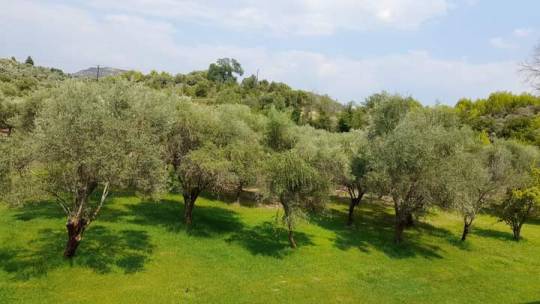
That particular blue sky at Delphi and nowhere else in the entire world:

This stolen second at the Monastery of Saint John the Theologian, on the island of Patmos. Probably one of the places you'd happily haunt when you're gone:

But above anything else, really anything else, this:

I will tell you why just before leaving for good. Maybe it's not a spectacular story that sealed the deal between Mycenae and I, but it's mine.
Today is Greece's first and foremost National Day (they've got two of them, remember?) and also the Feast of the Annunciation, in the Greek-Orthodox calendar.
Ζήτω η 25η Μαρτίου!
Ζήτω το 1821!
Ζήτω η ΕΛΛΑΣ!
104 notes
·
View notes
Text
occurring to me that I somehow literally have not mentioned this on here yet but I moved!! into an actual normal human sized 2 bedroom apartment with my partner and our 2 friends in a neighborhood that actually feels like a place where actual real life human beings live. cannot stress how absolutely perfect the area is like it almost feels like the downtown/main street area of a smaller town like Eugene or Olympia which imo after living near actual downtown seattle for the last half a year (and wanting to blow my fucking brains out every time i stepped outside after a certain point) feels like the perfect middle ground between still cool/exciting/urban and residential. grocery store across the street a million genuinely affordable little restaurants and bars all fucking over the place (which btw I'm so fucking hype about because seeing/smelling all the restaurants I'd walk past in belltown that I would never in my life be afford made me want to kill myself) and my favorite beach park in the city is literally a mile and half down our street. kicks ass
27 notes
·
View notes
Photo

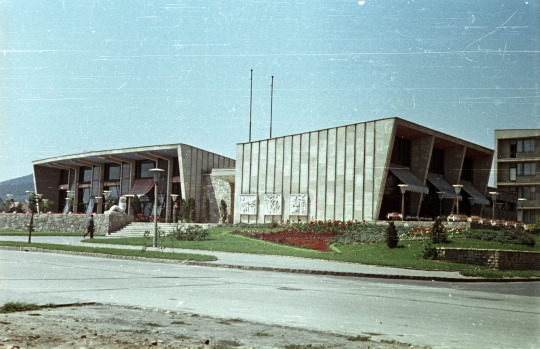
Olympia restaurant, Uránváros, 1962. From the Budapest Municipal Photography Company archive.
239 notes
·
View notes
Text
Something stupid...
I recently rewatched tmnt 2012 and thought... wow, there's loads of fully rendered and designed shops in the background. Has anyone ever listed them all for reference?
I didn't even check the fandom wikia so maybe someone has. But hey ho. I've done it now.
So here's all the shops and comics shown in the TMNT 2012 series, for your reference fellow writers and other insane people.
.
Comic books seen throughout the series:
'From the Sewer' (S1 E1, 08:09)
'Martial Pain' (S1 E4, 09:00)
'Famous Creatures of […] Town' (S1 E7, 22:49) **couldn't make out one of the words, sorry!
'Corps Cadares: The Dead Will Save the Earth' (S1 E11, 04:08)
'The Timely Times' (S1 E20, 09:43)
'Diabolical Dead' (S1 E20, 09:43)
'Barbarian' (S1 E20, 09:43)
'Space Heroes' (S1 E23, 10:08) -- Leo collects.
'Tales from the Cosmos' (S2 E2, 00:46)
'Dude' (S2 E4, 10:04)
'Modern Ninja Magazine' (S2 E7, 00:50) --Raph collects.
'Shock Techno' (S2 E10, 00:19)
'Weekly Weird News' (S2 E14, 28:17)
'Green with Envy' (S2 E16, 10:17)
'Split' (S3 E5, 05:45)
'Wingnut' (S4 E19, 00:12)
'Arachnid Man' (S4 E19, 00:27)
'Superb Man' (verbal, not physically shown- S4 E19, 00:29)
'Fantastic Four Food Groups' (S4 E19, 00:31) --heavily associated with Raph.
'Dracula's Castle' (S5 E17, 07:19) -- heavily associated with Mikey.
'Vampire Hunter' (S5 E17, 07:18) --heavily associated with Mikey.
.
Shops seen throughout the series:
Book Store (S1 E1, 10:28)
Second Time About (S1 E1, 13:21) -- April stayed with her Aunt above this shop.
Vlad's Repo Depot (S1 E1, 19:31)
Kingfisher Antique/Rare Buy.Sell Jewelry (S1 E1, 21:30)
Fortune Cookie (S1 E3, 14:32) --Purple Dragon base
Rock Bottom Boxing Club (S1 E4, 10:27)
Old Chinatown Tattoo Company (S1 E4, 10:27)
Downtown Athletic Club (S1 E4, 16:08)
Futua-noid Electronics (S1 E5, 17:38)
Pet Supplies (S1 E5, 17:38) -- right next to an alleyway, so I would guess that this the pet store the turtles were bought from.
Mad Wax Records (S1 E5, 17:46)
Everything Store (S1 E5, 17:47)
Dim Sum Then Sum (S1 E7, 12:24)
Laundromat (S1 E7, 13:03)
The Olympia Diner (S1 E8, 02:35)
Tidal Wave Fresh Fish (S1 E8 09:24)
Balzac Chateau du Beuf (S1 E9, 00:32)
Pocket full of Rosies (S1 E9, 00:43)
Wolf Hotel (S1 E9, 13:48) --first met Shredder.
Chinese Herbs and Health (S1 E10, 15:28)
Antonio's Pizza-Rama (S1 E13, 04:53)
Produce City (S1 E16)
(Closed down) Maramba … Shop (S1 E14, 00:35)
Chilly Chillkins Refrigeration company (S1 E14, 21:03)
Roosevelt High School (S1 E15, 09:05)
Comics (S1 E15, 09:05)
Worldwide Genome Project (WGP) (S1 E15, 15:13) --used as Kraang base.
Sweet Dreams Ice Cream (S1 E17 00:27)
Madam Alahazam Fortune Teller (S1 E17 00:27)
Wam-Bam-Pow Comics (S1 E17 00:25)
D.W Yatt Apothecary Est.1875 (S1 E16)
Magic Middleton's Tricks and Costumes (S1 E21, 13:09)
Ziga's Transmission Allignment Collision Tune-Up Autobody (S1 E24, 11:46) --used as Kraang base.
Argosy Theatre (S2 E1, 01:19)
Newstand (S2 E4, 10:04)
Midtown Ice Rink (S2 E6, 06:29)
Barber Shop (S2 E8, 00:11)
Lox Schmear & Java (S2 E19, 17:21)
Bernie's General (S3 E5, 04:44)
Comet Cleaners (S3 E11, 03:29)
Play Pier (S3 E11, 09:03)
Auman Chemicals (S3 E14, 14:53)
Channel 6 (S4 E10, 07:40)
AMAS: Allied Martial Arts Supply (S4 E15, 13:24) -- Used to hold Shredder/Foot Clan's weapons.
Cowabunga Skates (S4 E17, 05:20)
Run Jump Kick (S4 E17, 05:20)
Dell Abate Ristorante (S4 E18, 06:25) -- Don Vizioso's restaurant.
Felipe's (S4 E18, 16:27)
Hicnight Hotel (S4 E18, 17:16) --Don Vizioso's base.
Mini Mart (S5 E3, 16:19)
Friendly Jack's Loans (S5 E3, 17:43)
Wan Dingo's House of Curiosities and Oddities (S5 E5, 13:28)
Shanghai Sternn's Stir Fry (S5 E10, 12:04)
.
Notes:
The episode timestamps might not be totally accurate since I was watching this on a... ahem... legal website.
The timestamps are from when you could clearly and obviously see the shop signs. Like, Ziga's is visible from like episode one but couldn't be clearly read.
Some of the comics were just in shop windows and not really associated with a character so be careful. That is not a list of every comic the turtles have read. Like the Timely Times has only been in the background, not read by a particular turtle.
There were LOADS of shops where the shop name was in Chinese (or Japanese, I don't know) and so I couldn't list. Most of the shops by the Chinatown arch weren't in english. That's why even Murakami's shop isn't listed here. Because the actual shop name wasn't in english.
Thanks for reading through this. Hopefully this was useful for... anyone out there.
26 notes
·
View notes
Text
THIS DAY IN GAY HISTORY
based on: The White Crane Institute's 'Gay Wisdom', Gay Birthdays, Gay For Today, Famous GLBT, glbt-Gay Encylopedia, Today in Gay History, Wikipedia, and more … April 18



382 BC – Philip II of Macedon, ancient Greek king and military genius - the actual date is unknown, so we'll use today. (d.336 BC). He served as king from 359 BC until his assassination in 336 BC. He was the father of Alexander the Great, Philip III and possibly Ptolemy I, the founder of the Ptolemaic dynasty in Egypt. Philip was the ancient military genius who defeated the combined Athenian and Theban army and conquered all of Greece, setting in motion the grandiose ambitions of his son Alexander.
Philip II, like his son, pursued young lovers tirelessly all his life. His very death came at the hand of a vengeful former beloved, Pausanias, who had been spurned by the king.
The reasons for Pausanias' assassination of Philip are difficult to fully expound. The only contemporary account in our possession is that of Aristotle who states rather tersely that Philip was killed because Pausanias had been offended by Attalus, the king's father-in-law.
Fifty years later, the historian Cleitarchus expanded and embellished the story. Centuries later, this version was to be narrated by Diodorus Siculus and all the historians who used Cleitarchus. According to the sixteenth book of Diodorus' history, Pausanias had been a lover of Philip, but became jealous when Philip turned his attention to a younger man, also called Pausanias. The older Pausanius' taunting of the new lover caused the younger man to throw away his life, which turned his friend Attalus against Pausanias. Attalus took his revenge by inviting Pausanias to dinner, getting him drunk, then subjecting him to sexual assault.
When Pausanias complained to Philip the king felt unable to chastise Attalus, as he was about to send him to Asia with Parmenion, to establish a bridgehead for his planned invasion. He also married Attalus's niece, or daughter, Eurydice. Rather than offend Attalus, Philip tried to mollify Pausanias by elevating him within the bodyguard. Pausanias' desire for revenge seems to have turned towards the man who had failed to avenge his damaged honour; so he planned to kill Philip, and some time after the alleged rape, while Attalus was already in Asia fighting the Persians, put his plan in action.
Other historians (e.g., Justin 9.7) suggested that Alexander and/or his mother Olympias were at least privy to the intrigue, if not themselves instigators. The latter seems to have been anything but discreet in manifesting her gratitude to Pausanias, according to Justin's report: he says that the same night of her return from exile she placed a crown on the assassin's corpse and erected a tumulus to his memory, ordering annual sacrifices to the memory of Pausanias.


1925 – John Paul De Cecco (d.2017) was an American academic. He was a professor of psychology at San Francisco State University, the editor-in-chief of the Journal of Homosexuality from 1975 to 2009, and a "pioneer of sexuality studies."
John Paul De Cecco was born in Erie, Pennsylvania. He had four siblings, and he was of Italian descent. His father was a restaurant and property owner. His three maternal uncles were members of the Mafia who "married prostitutes."
De Cecco graduated from Allegheny College, where he earned a bachelor of science degree in biology in 1946. He subsequently earned a master's degree and a Ph.D. in European history from the University of Pennsylvania, in 1949 and 1953 respectively. He took additional coursework in educational psychology at Michigan State University. He also attended Columbia University in 1968-1970.
De Cecco became an assistant professor of education and psychology at San Francisco State University in 1960. He eventually became a full professor of psychology.
De Cecco took part in the opposition to United States involvement in the Vietnam War. He was a member of the Gay Activists Alliance and the faculty adviser of the Gay Students Coalition at SFSU, co-founded by Mark Thompson. With Michael G. Shively, De Cecco was the co-founder of the Center for Homosexual Education, Evaluation and Research (CHEER) at SFSU in 1975. De Cecco served as editor-in-chief of the Journal of Homosexuality from 1975 to 2009. Additionally, he was a "member and sponsor" of the GLBT Historical Society.
He was described as a "pioneer of sexuality studies" who had been "in the forefront of three decades of change in gay-related academia".


1934 – Mark Frankland, British journalist (d.2012), was recruited to MI6 as a young man but left to become a distinguished foreign correspondent for The Observer, principally in Moscow. But though he worked for the paper for more than 30 years, he remained an enigma to his Observer colleagues, who failed to penetrate the mysteries of his family background and his carefully protected personal life.
It was only through his memoir, Child of My Time, written when he was 65, that they learned that he was gay.
His father, Roger, became a wing commander in the war and served at Bletchley Park. Mark's parents were plainly unhappy. They divorced while Mark and his elder brother Timothy were away at school. Mark's mother's second marriage also failed and she became an alcoholic.
Frankland was a withdrawn figure – tall, thin, with penetrating eyes behind rimless glasses, giving little away about himself but inquiring eagerly about the people he was talking to. This was not only a useful quality for a journalist but also for a spy, which he became after graduating from Cambridge.
For National Service, Frankland volunteered for the Royal Navy, where there was an appetite for people with proven ability as Russian translators. He liked learning Russian, rapidly acquiring a working knowledge. And, as he revealed in his memoir, the navy provided the 18-year-old Frankland with a newfound opportunity for gay sex. This section of his memoir rather startled some old friends. It was not that anybody doubted his sexuality, but he had always been discreet about it; neither proud nor ashamed to be gay. Just was.
His knowledge of Russian, which he had learned during National Service with the Navy, marked him out to MI6, and Frankland was recruited after helping a Polish student escape to the West when he was attending a conference in Warsaw.
He was trained to pick locks, use codes and secret inks and eat messages written on special paper. He also learned how to fire a Browning automatic pistol and how to send signals from a beach to a submarine. In an exercise he failed to shake off pursuers who were tailing him, despite jumping on and off Underground carriages as the doors were about to close, as he had seen done in films.
Eventually, after working in MI6's headquarters, he refused a posting to Africa and decided that the world of espionage, dealing in "boyish tricks and thuggery, stealth and deceit", was not for him. He resigned after a year, which was virtually unheard of.
He had no training as a journalist before joining the Observer in 1962 and had to be given lessons in newspaper writing by the veteran Soviet correspondent, Edward Crankshaw.
Frankland's appearance in Moscow as a journalist raised eyebrows at MI6. They thought he might be turned by the Russians if they learned of his intelligence background – as they might well do, given that the traitor George Blake, who had worked in Broadway Buildings when Frankland was there, had compiled a list of British spies for his Kremlin masters.
MI6 approached him and asked him to report on the Russians he was seeing. When he refused, he felt that a black mark had been placed against his name and he was given an uncomfortable grilling at the Ministry of Defence. He sensed he was being followed and that a watch was kept on his London house.
When he was asked bluntly by a colleague in later years "Does one ever really leave MI6?", he replied non-committally: "Now there's a question." In fact, as he explained in his memoir, he found himself caught in a curious espionage halfway house, not fully trusted by London, and certainly not by Moscow.
Frankland made a point of studying the language, history and culture of all the countries he reported on. He was profoundly affected by the war in Vietnam and later helped a Vietnamese family to settle in the West. The war left him with grave doubts about America, but he grew to love the country when The Observer sent him there. In Japan he learned the language and immersed himself in the country's customs. In Czechoslovakia he became a friend of Vaclav Havel.
Mark Frankland was survived by his long-time partner, Dang Thuong Nguyen, a Vietnamese painter and poet.


1963 – Heterosexual Eric McCormack is a Canadian/American actor, musician, writer and producer, best known for playing a gay man in Will and Grace. Born in Toronto, he began his acting career performing in school plays at Stephen Leacock Collegiate Institute High School.
For much of the late 1990s, he lived in Los Angeles and had minor roles. He made his feature film debut in the 1992 science fiction The Lost World. McCormack appeared in multiple television series roles, including Top Cops, Street Justice, Lonesome Dove: The Series, Townies, and Ally McBeal. McCormack later gained worldwide recognition for playing Will Truman in the American sitcom Will & Grace, which premiered in September 1998. His performance earned him a Primetime Emmy Award for Outstanding Lead Actor in a Comedy Series in 2001.
McCormack received his break-through role in 1998 when he was cast as lawyer Will Truman on NBC's sitcom Will & Grace, a series centered on a gay man (Will) and his Jewish best friend (Grace). McCormack said that when the part came along, he was convinced he was right for the role. "At the end of the audition, Max [Mutchnik, co-creator and executive producer of the show] said 'That was perfect. Just to let you know, you never have to be more gay than that.'"
He explained that when he first read the script, "what hit me immediately was that this was me. I mean, sexual orientation aside, Will was so much like me. He's a great host, he's relatively funny and he has great friends and he's a good friend to them ... the gay issue just wasn't really a big thing."
The show debuted on September 21, 1998 and was watched by almost 8.6 million American viewers. Will and Grace quickly developed a loyal audience, with the show and McCormack receiving strong reviews. John Carman of the San Francisco Chronicle commented that McCormack and Messing worked "nicely" together. Kay McFadden of The Seattle Times also praised McCormack, Messing and the supporting cast as "very funny". For this performance, he earned four Emmy Award nominations (2000, 2001, 2003, 2005), one of which resulted in a win (2001), for Outstanding Lead Actor in a Comedy Series. In addition, he received five Golden Globe Award nominations.
McCormack is a supporter of same-sex marriage and attended a march in Fresno, California, on May 30, 2009, after the Supreme Court of California upheld a ban on same-sex marriage approved by voters in November by ballot Proposition 8.


1950 – Kenny Ortega is an American film and television producer, director, and choreographer, best known for directing Hocus Pocus, the High School Musical trilogy and Michael Jackson's This Is It concerts.
Ortega was born in Palo Alto, California. Initially known for working with dancer and choreographer Gene Kelly on the film Xanadu, Ortega went on to choreographing the dance for the Menudo video "Hold Me", as well as the 1987 film Dirty Dancing, and has won awards for choreography in music videos, such as Madonna's "Material Girl". He also worked with The Tubes on their stage shows and directed the video for She's a Beauty.
Ortega directed Billy Squier's "Rock Me Tonite" video, which is often cited as the worst music promo clip ever made and has been blamed by Squier for killing his career. Together with Michael Jackson, he created and designed the Dangerous World Tour 1992-1993 and the HIStory World Tour 1996-1997. He has also choreographed events ranging from Super Bowl XXX, the 72nd Academy Awards, the 1996 Summer Olympics (Atlanta) and the 2002 Winter Olympics (Salt Lake City).
In addition, Ortega has directed and choreographed High School Musical, High School Musical 2, High School Musical 3: Senior Year, and was choreographer of The Cheetah Girls 2.
In May 2009, Ortega began work on the scheduled Michael Jackson 50-date This Is It concerts, which was cancelled subsequent to Jackson's sudden death. He directed the concert film Michael Jackson's This Is It which was put together from rehearsal footage recorded at the Los Angeles Forum and the Staples Center.
Ortega directed the Michael Jackson Public Memorial at the Staples Center in Los Angeles, which was broadcast live on several networks on July 7, 2009. It reached a television audience of 31 million in America, and more than 1 billion worldwide and via the internet. At the end of the service, he introduced a rendition of Jackson's 1985 charity single "We Are the World" created for the This Is It concerts, featuring Jackson's backing singers on lead vocals with his dancers performing around them.
On May 12, 2014, Ortega guest-judged on the 18th season of Dancing with the Stars during the semifinals.In the clip below he talks about life as a gay man today:
youtube


1976 – Today's the birthday American actor and singer and multiple Tony award nominee Gavin Creel.
Born in Findlay, Ohio, Creel received his Bachelor of Fine Arts in musical theatre at the University of Michigan in 1998. He most recently portrayed Claude in the new Broadway revival of Hair for which he received a Tony nomination for Best Actor. Gavin has also appeared on Broadway as Jean-Michel in the 2005 revival of La Cage Aux Folles. He received a Best Actor Tony nomination for his performance as Jimmy Smith in Thoroughly Modern Millie. Creel originated the role of Hollis Bessemer in the premiere of the Stephen Sondheim musical Bounce. Creel's debut album is titled GoodTimeNation with collaborator Robbie Roth and continues to perform his original music.
Creel, who is openly gay, is a regular on the LGBT RFamilyVacations cruise with Rosie O'Donnell. He is also one of the founders, with Rory O'Malley and Jenny Kanelos, of Broadway Impact, an organization fighting for equality and the LBGT community.
Creel's latest single, "Noise," released in December 2011 and co-written with songwriter Robbie Roth, is intended to raise funds and support for marriage equality across the country. To promote the single, Creel and Roth, along with their friend and colleague, Newsies star Andrew Keenan-Bolger, created a groundbreaking new music video for "Noise," which tackles the entire history of the gay rights movement, and presents it as a pop-visual presentation.
youtube
You can find and download the song at iTunes. ($0.99)


1983 – Kansas passes a new sodomy law that makes sodomy for hire a less serious crime than not for hire.


11 notes
·
View notes
Text
Betrayal (10)


Part 1 Part 2 Part 3 Part 4 Part 5 Part 6 Part 7 Part 8 Part 9
Masterlist of fan fiction
Fandom: Crossover of Spooks and Pilgrimage (Modern AU)
Pairings: Lucas North x OC/Raymond de Merville x OC
Warnings: Love triangle. Angst. Language. Sexual references/language. Cheating. Stalking.
Summary: Amy Holland is Lucas North’s girlfriend of six months. Amy is aware of his job as an MI-5 agent and supports him. However, Lucas’ cousin, Raymond de Merville, has always loved Amy and uses their one night stand together as leverage for something more.
Comments/Notes: If you wish to be tagged in any of my tag lists for fics or characters, please let me know, and stipulate what you want to be tagged in. I’m gradually removing people from my tag lists who do not interact.
Amy had now been back in Coventry for around ten days, residing in her old bedroom. The walls had been re-painted; now beige, rather than the deep lilac she had always been used to. Her furniture had either been set for being sold online, or was now gracing the house somewhere. Her work transfer had been slightly delayed, giving her a few weeks to get accustomed to life back home before going into a new employment environment.
On the second Friday of being back home, Amy got herself prepared for a meal she had arranged with Lucas. He had invited her to spend time with him in town at a new Italian restaurant that had opened. Raymond had practically turned into a ghost. No communication. Nothing.
After stepping out of the shower, Amy styled her short hair, which was now growing fairly long in comparison to the medium-length pixie cut she had sported only six weeks ago. It annoyed her how quickly hair grew and how much maintenance short hair needed. She picked up her bottle of Olympia perfume by Paco Rabbane, the one fragrance that was Lucas' favourite on her. She remembered how just after their first official date and kiss, he had mentioned how it was the first thing he noticed upon their very first meeting at their local cafe - the scent of Olympia wafting from over his shoulder.
Amy stared at the bottle, wondering whether to put it on or not. Any kind of seduction or flirting was not on the list of intentions for the evening. She missed Lucas, more so every day. She missed waking up next to him whenever they stayed over at one of their flats. She missed the comfort, the warmth, the intimacy. She missed the trust she had in him. For those six months, Lucas had been her life.
Lucas arrived promptly at seven outside Amy's house, and walked up to the front door, only to see it open and her beautiful face appear before him. She looked up at him and blushed, subconsciously brushing a loose piece of hair behind her ear. It took him back to their first date together; she had been nervous, flushed in her face, and stuttered a little. He looked upon the frilly white blouse she was wearing, which accented her generous breasts perfectly.
Amy couldn't help but feel her gut curl at the sight of Lucas. He was wearing a navy blue shirt and black over jacket; comfort with a slight hint of sophistication. She smelt his cologne, fresh with a touch of sandalwood. Was that the one she had brought him for Christmas?
"How have you been? Did you travel up today?" Amy asked, as both of them walked down the front garden path towards Lucas' car, a black BMW.
"Yeah, I got up here early afternoon and I've booked into a hotel overnight," he replied. "The Hilton just a few miles away."
Their conversation continued on as they got in the car and Lucas pulled away from the kerb and took off into town. They mused over each other's day, commented on the terrible weather that afternoon, and then the conversation dropped a little.
Amy looked at Lucas' hand which was propped against the gearstick. She wanted that hand to touch her, caress her. It made her think on their lovemaking. Tender, loving. Lucas always took his time, nothing rushed. That hand had been acquainted with her many times.
"I....I've missed you," Amy said.
Lucas was just pulling into the restaurant car park as she spoke those words. He switched off the ignition and rested back in his seat, then looked over at her sat beside him. Her perfume. It made him smile and his heart fluttered in his chest. "I love you." His voice cracked slightly as he spoke. "Being away from you has..."
"Shhh," Amy cooed, taking his hand. "It's okay. I know it's been hard. I just can't forgive myself for what's happened."
"Things take time. Sometimes forgiving yourself is harder than forgiving others."
"That's definitely true."
***
Raymond waited outside the restaurant, after following Lucas' car. The tracker he had got hold of had worked like magic. Now the terrible wait came.
Over two hours before he finally saw Lucas and Amy re-appear. She was now holding on to Lucas' arm, smiling, and looking a lot more comfortable in comparison to when she went in.
Raymond waited a few minutes, allowing Lucas to leave. Then he looked down at his phone, tracing the red circle along the winding roads.
By the time Raymond found the destination of Lucas, he growled. It was paid parking only. The Hilton customer car park. However, he was able to catch sight of Lucas and Amy walking in through the main front entrance of the hotel, before he was forced to take his car down a back street to park.
On his phone, Raymond looked through the data which was held on Lucas' car. He had stopped briefly for a few minutes, at seven exactly, in a residential area. This must have been where he had picked Amy up from.
***
Amy woke the next morning, lying next to Lucas. He was still asleep, his dark eyelashes fluttering. He seemed at peace, unlike many nights when she had woke up with him after a nightmare. She shifted a little in the bed, and looked over at the bedside clock. 6:30.
"Morning, you," Lucas whispered, waking from his slumber. He smiled upon seeing her. For a brief second, he felt as if he were in a dream, not quite yet back in reality.
"Morning, love," Amy replied. She moved in and placed a kiss against his lips, listening to him groan.
The night previous had been murder for him. He knew that Amy was holding back. There had been the odd touch of hands, holding of arms, but no more contact than that. Even though they were lying next to each other, having slept in the same bed, no physical intimacy had occurred.
The kiss grew deeper, more needing, more wanting. Amy slid over Lucas, straddling him. She laced a hand in his, and felt him grip it. Her hips began to grind against his, and immediately she could feel his erection pressing on her. That sensation of his arousal pulled her out of the trance which had overcome her. "I'm sorry," she whimpered, and pulled herself off him and away.
***
Raymond waited for Amy that afternoon. He'd followed her from her home address, having parked outside, in the general vicinity that his phone app had given him from the data against Lucas' car.
He knew she'd stayed the night with Lucas. Then she'd been dropped off by Lucas at around midday.
The shopping centre where Amy had disappeared to was fairly busy, but nothing like London. Raymond kept his distance, remaining in shops adjacent to her and then let himself slip behind people, using the crowds as cover.
Amy sat down in a Costa coffee shop and picked up a Frappuccino. The feeling of being watched had been sitting in her gut all day, and she couldn't shake it. When finally her suspicions were confirmed. She caught sight of Raymond walking past the very front of the building, pretending to be focusing on whatever was in front of him. He was wearing dark aviator sunglasses. But she could tell that profile anywhere, paired with the short dark hair and grey peppering his temples.
Amy grabbed her phone and rang Raymond.
"Aim?" he answered.
"Get your arse in Costa, Ray. I know you're following me. You literally walked past the window a minute ago."
The call ended abruptly, and within thirty seconds, Raymond came into the shop. He approached her, removed his glasses and sat down opposite her.
"Why are you following me? Normal people just pick up the phone and call."
"As if you'd listen to me," Raymond hissed.
Amy leaned across the table, her eyes wide in frustration. "What the fuck do you want from me? If you're expecting me to give up on Lucas completely just for you, then you're pretty delusional."
"I'm aware you've already jumped back into bed with Lucas. Doesn't take you long."
"You are absolutely foul," Amy growled. "Just when I thought you were actually a decent person deep down, and I found myself feeling sorry for you and wanted to stay friends with you. You swing back and forth so quickly. You were definitely right when you said you're stupid."
Raymond stared at Amy. "I thought you needed time?"
"Ray. Please, see sense here. I was with Lucas for six months, so there's a lot of feeling and love there. You can't expect me to throw all of that away for you. You need to give up on me. Go and find someone else. There are plenty of people..."
"No," Raymond said simply.
"No, what? Love is never easy. We all know that. You can't just have what you want all the time. Haven't you learned that?"
"There was something between us."
Raymond eyes were still burning into Amy's gaze.
"There was something, and I regret every day that I acted on it. Lucas deserves so much better. But he can forgive in a way that I'm sure neither of us can. Could you have forgiven me if I'd have been with you and cheated on you with Lucas?"
Raymond remained silent, his jaw clenched.
"I didn't think so. And to make things clear, nothing happened between me and Lucas last night. Not that it's really any of your business. But I'm not like that; I've hurt him enough, and I want things to be right this time."
"I won't give up on you," Raymond spat.
Amy rolled her eyes. "For God sake, Ray. You can't rely on me. I'm willing to be there for you as a friend, but nothing more."
***
Follow Forever tag list: @i-did-not-mean-to @lathalea @middleearthpixie @luna-xial @meganlpie @linasofia @xxbyimm @guardianofrivendell @knitastically @rachel1959 @eunoiaastralwings @asgardianhobbit98 @spidergirla5 @sunflwrnsunnieshine
#Richard Armitage#Lucas North#Lucas North x OC#Spooks#MI-5#Raymond de Merville#Modern!Raymond de Merville#Raymond de Merville x OC#Original Female Character#Crossover#Pilgrimage
65 notes
·
View notes
Text
Don't let Mondays get you down, bring your appetite and your friends! Traditional Mexican Food and great service! We can't wait to serve you! See you soon! 🌶️ #MexicanCuisine #YelmEats Visit us at any of our three locations: Marvin Rd ☎️(360)456-8222 Yelm Hwy ☎️(360)459-0818 Pacific Ave ☎️(360)491-8244 or 📲 Place your order online to start your order today! direct.chownow.com/order/25326/locations
Don't let Mondays get you down, bring your appetite and your friends! Traditional Mexican Food and great service! We can't wait to serve you! See you soon! 🌶️ #MexicanCuisine #YelmEats Visit us at any of our three locations: Marvin Rd ☎️(360)456-8222 Yelm Hwy ☎️(360)459-0818 Pacific Ave ☎️(360)491-8244 or 📲 Place your order online to start your order today! direct.chownow.com/order/25326/locations
0 notes
Text
Paris Travel

The place dreamed of by most couples, the city of love and much more than what they have told you.
Let yourself be attracted by its magnificent monuments, its historic streets and its great magic in romanticism.

Anecdotes:
-When we arrived in Paris we were trying excellent restaurants and especially a place of classic and original macarons
-We were having a picnic in the parks of the Eiffel Tower, we watched the night and enjoyed the Camps Elysse.
-We were in Paris from April to May, it is a recommended date because the weather was very pleasant
-We were walking through Montmartre, the most artistic neighborhood in Paris, when we saw many artists painting live in the streets.
-We were visiting one of the oldest and most impressive Gothic cathedrals, Notre Dame and we took many photos to remember that beautiful day.
-We were taking a cruise on the Seine River and we really enjoyed the wonderful view of the city.

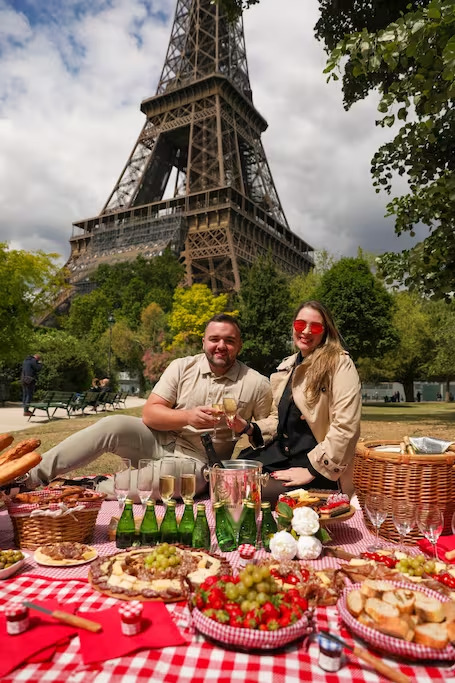
What should we bring?
You should wear perfume, very fashionable and a little elegant clothes, umbrellas and a camera for the incredible photos

Activities you can do
-You could climb to the top of the Eiffel Tower and enjoy the views from the top of the most beautiful monument in Paris.
-You should start the day on the Champs-Elysées, enjoying a walk along “the most beautiful avenue in the world.”
-You shouldn't miss the Louvre Museum and Get up close and personal with the Mona Lisa!
-You should visit the Notre-Dame cathedral and Pay your respects to Our Lady of Paris.
-You could attend a show at the Paris Opera, a concert at the Olympia tatro or a ballet at the Moulin Rouge.
-You should visit the Sacred Heart Basilica, it offers wonderful views of the city and is a popular place to watch the sunset.

The Louvre Museum
Recommendations for sustainable tourism.
-You should choose an ecological hotel with sustainable practices that use renewable energy, ecological products and save water.
-Move green in Paris. You should use the subway, bus, tram or light rail: economical and ecological!
-Cycle through Paris. You should rent a bike and enjoy the city while exercising.
-Taste Paris with local products. You could enjoy restaurants that use fresh and seasonal ingredients, supporting the local economy.
-Volunteer in Paris! You could help the local community and make a difference. There are many organizations that need you.
You should take care of the places you visit. Don't vote trash and respect the environment.
Reviews
-I was walking around Paris, admiring the architecture and visiting monuments like the Eiffel Tower and the Louvre. It was a wonderful experience
-I took the tour of the Seine River at sunset and while I was having dinner I was able to see the Eiffel Tower light up. I recommend you do this tour.
-I was visiting museums like the Louvre and learned about French history and culture.
-I was touring the city on public transportation but it was very slow and there were a lot of people
-I couldn't enjoy the city because it rained very hard on the days I was visiting the city.
-I traveled to Paris with my family and my children enjoyed all the places we visited. It was a very nice experience
2 notes
·
View notes
Text
Unpacking The Plum: Manet’s Footnote Painting
This essay was written as the capstone to my art history major at Wayne State and remains a work that I'm particularly proud of. I'm including the name of the class and professor, since those are important, and I've ordered the images at the bottom of the post in descending order. Image 1 is figure 1, image 2 is figure 2, etc. Otherwise, the body of the text remains unedited from what I submitted to Dr. Olmsted.
AH 5710
Dr. Olmsted
April 25th, 2021
The Plum[1] by Édouard Manet is an often-discussed piece in his oeuvre to show how the earliest of the painters of modern life handled images of women and as a foil to the ever-popular image of lounging Olympia[2]. However, while this painting is often mentioned it is rarely unpacked in depth, with the figure’s more precise identity up to speculation. This is partially due to what Manet is so often praised for accomplishing: realism and ambiguity. There is some speculation as to the occupation, social class, and purpose of the figure that takes up such a large portion of the canvas. Clues lie in her clothing, visible behaviors, and the titular plum that resides in an intricate glass of brandy. This paper looks to explore the available information about the woman. What is her likely occupation? What is the implication of her sitting at this café table alone? Why does she seem completely oblivious to the viewer, yet retain Manet’s signature unavailability? By looking through some of the situations regarding the artist himself, the café culture that was ubiquitous with Paris in the late 1800s, and examination of similar works of women and figures of various social classes, this paper looks to gain a deeper understanding of The Plum. Ideally, as more than just a footnote at the end of a biography[3].
The painting itself is a portrait, or perhaps a one-figure genre scene, showing a woman in a pink dress sitting alone at a marble café table as she looks off into the distance away from the viewer. One hand supports her head, while the other holds an unlit cigarette, both hands exposed with no fashionable gloves in sight. Before her, on the table, sits a single glass with a plum and brandy inside it, though she does not appear to have had any of it yet. The style avoids much modelling, and flattens the image significantly with visible brush strokes, making the constructed nature of the painting known to the viewer. The setting of the image, the café, which is seen in the distinctive marble table style and the latticework behind the figure’s head, serves as a good backdrop for both Manet and unpacking the information that would have been known to Parisians in 1877.
In the Paris of the 19th century, food and the café atmosphere were large parts of daily life, often discussed as new restaurants emerged frequently in the large city, prompting many discussions about the cuisine of the city[4]. By the 1880s, cafés of all different types were available for residents and visitors of the city of lights[5]. They became increasingly popular as a business model and as a cultural fixture, frequented often by the impressionists in the case of Café Guerbois[6]. This is benefitted by the natural landscape of France, which is able to support the growth of all different types of flora and fauna that would make a diverse spread of food available to much of the population[7]. They even gained new language to better describe the people who would often visit cafés, calling them Habitués, people who would habitually return to their restaurant of choice[8]. Often going to a café was a social affair, with patrons coming in groups[9] or meeting with specifically “café friends,” those who one would meet and talk with specifically in the context of a cafe[10]. Some of these Habitués would even garner nicknames for themselves among the groups of other café goers, distinguishing them by physical characteristics such as dress or clothing, and these usually took the form of such phrases as “le décoré” for someone who often wore army medals[11]. This rings a bell as a similar form for the French title of The Plum, La Prune.
While many people would go to the café alone, or specifically to mingle at the café[12], this was not something that was available for all sexes (as is so often the case in modern period cultures). It was considered uncouth for women to go alone to these places to socialize[13], especially so for women who were more scrutinized in public; those of the upper classes. This leads The Plum to show a scene that is strange in the isolation of a female figure, something that would have been seen as indicative of her lack of attention to proper café customs. However, it would not have been uncommon for a woman to go to a café alone if her profession were more illicit. Prostitution took hold in the restaurant scene in the 19th century as they could be used as spaces for more clandestine meetings between women and clients[14]. These meetings would often lead to the actual transaction occurring in a place other than the café establishment but were encouraged by an air of availability when a woman came without a companion. In addition to this, there was a societal connection drawn between food and sex that emerged from the availability and consumption of both in the same type of building[15].
It does not help the case against the cafés of Paris that the city had recently seen an increase in a type of business referred to as Brasseries à femmes, café that employed young women and girls as waitresses who would often flirt with the customers[16]. These very irreputable businesses gave many of the working-class restaurants around Paris a slightly more unfortunate reputation[17]. This even gave a seedier reputation to more middle-class cafés as well, affecting the perception of the Folies-Bergère[18]. While this reputation may have been somewhat warranted, the reputation was still affected regardless as the brasseries became more known and understood for their services around the city. This was all the more appealing for those who looked to paint modern life, however, for whom the sexuality of the city was seen as indicative of the new fast paced modern age of decay[19].
However, the availability of a woman alone in a café is not precise, and there is always wiggle room, especially in Manet’s works[20]. The cigarette and isolation lead to one interpretation, but her contemplative expression and obliviousness to the viewer give another[21]. Hollis Clayson suggests that the viewer is thwarted in their access to her by the lack of any sense of seduction, while there is no consumption of the food or smoking to suggest that she is also for consumption[22]. Carol Armstrong, who uses The Plum as an interpretive foil to Woman Reading[23][24], cites the posture of the woman as something that belies her iniquity as it is reminiscent of the pose of his Absinthe Drinker[25] from nearly two decades prior[26]. Though this seems to be a bit more on tenuous grounds as the pose is merely a gentle lean in both paintings and given Manet’s interest in the realism of Courbet[27], seems more likely a consequence of their respective seating than an indicator of character. Something similar could be said of the pose of the central figure in Bar at the Folies-Bergère[28], as she leans against the counter towards the viewer, save for the artist’s continued rejection of the traditional visual language of sexuality in 19th century Paris[29].
Drawing comparisons between Absinthe Drinker and The Plum is certainly an interesting pairing as well. Given their historical distance in a time of great upheaval and change in Paris, they do have some similarities. Ewa Lajer-Burcharth places great emphasis on the costuming and almost parody aspect, the playing with expectations that the Absinthe Drinker would have had during its Salon submission[30]. This mirrors Armstrong’s interest in the clothing and painterly quality to the brushstrokes as they render the clothing of the woman in The Plum[31]. And both, as figures of more working-class origins based on their costumes, serve to pull more towards an interest in the more Marxist leanings of Lajer-Burcharth’s interpretation[32]. Both works are engaged with this kind of focused modernity in the same way as well, with the interest in clothing and their existence in a modern world being the primary subject in lieu of a more narrative-styled image.
Though another place to look for parallels to The Plum would be in other specifically café scenes like with Woman Reading. Bradley Collins compares The Plum with Chez le Père Lathuille[33] in the similarity of still action in a café, containing the fleeting moment, but in a sense of the fleeting moment of a person’s life rather than the mechanical pace of modernity[34]. Despite being another brief reference to The Plum, this puts a unique trajectory on the interpretation. For example, thinking of it as a snapshot of one of the slower aspects of 19th century Parisian life along with Manet’s interest in the complicated individual over the archetypal café prostitute, could this be an image regarding simply a person experiencing their day, immortalized in paint only by association with the post-Haussmann Paris? This would be somewhat on the uncharacteristic side, given the academic thoroughness of many of Manet’s other works around this time and earlier[35].
Therese Dolan has her own take on the work of Manet in the changing cityscape of Paris, taking his work in conjunction with the writings of Baudelaire to make an updated and modern aesthetic to match their environment[36]. In this style of interpretation, which focuses on the modernism of the paintings, both the poet and artist create kind of scaffolding for future artists to be able to paint the milieu of city life that was unconstrained by older styles of artistic interpretation[37]. This would make sense as an atmosphere that The Plum would fit into, disrupting the modes of genre painting and of portrait, while removing the overt sexuality that would be present in portraits of women of the time. This also follows with the earlier possibility of the painting dealing with a more focused modernity and even the kind of anonymity that would be present in the crowded café scene of 1877[38].
In many ways there are similarities to be drawn, as well, from the central female figure in The Bar at the Folies-Bergère, particularly in the interiority that is shown from just her facial expression[39]. Additionally there is a similar placement to the still life elements within the pair of paintings, the titular plum next to the woman’s left hand matched by the vase of flowers on the bar in front of the waitress. While the Plum is several years older than Bar at the Folies-Bergère, there is still foreshadowing in the plum itself that gives a hint to the still life interest that Manet will develop later and eventually make obvious in the features on the marble bar in the Bar. There is a similar disinterest in the viewer as well, despite the more direct gaze of the waitress. This is the sense of interiority that gives each of these women a realism about them beyond the surface level, the appearance of thinking and even being more absorbed by their thoughts than whatever position the viewer occupies just beyond the fourth wall of the canvas. This open-ended nature of The Plum is remarked upon by Clayson, who uses this to place the work of Manet in the 1870s apart from his contemporaries like Degas and Renoir[40]
To summarize, The Plum has very little direct scholarship written about it, and most of the sources used for this paper are tied to the handling of similar topics in other more frequently discussed paintings that Manet made. However, there are some intriguing possibilities that come out when taking more careful consideration of the piece itself. It has a bit more of an interest in the mystery of the figure. Now, that sounds very close to a Manet calling card, but rather than trying to pick the clothing, plum, and general figure apart to gain answers, perhaps the anonymity is exactly what the painter was aiming to achieve. It simulated, though little space around the figure herself, the small space of a café, and the kind of vignette that would be seen there. If the viewer were stood looking across a room, and saw a woman sitting alone, there is very little that would be properly known about her in that moment. Rather, she would be known only by her usual order, maybe a typical piece of clothing, or some other surface level identifier. She may have any type of occupation, but the mystery of knowing only inferences from her appearance makes part of the atmosphere of the image as a whole. Her raison d’être is to be an unknown woman from across the bar it seems.
Initially this project was started with the idea that it would be possible to discover the meaning behind the plum, what kind of intentions Manet had given his previous works with such academic references as Olympia. However, in searching that turned out to not be the case. Instead the culture around food and public spaces, the handling of other similar figures, and the artists own disposition had to fill in the gaps for topics to explore throughout this essay. Given the chance, a trip to France, really, there could be much more to learn and dissect in this painting. Many questions remained unanswered by the end of my research: what does the plum mean? What kind of symbolism is at play here? What would contemporary Parisians have known during their interactions with such a piece? Could “the plum” reference a nickname? Perhaps those are questions for a full-time scholar and professional researcher to find the answer to. Though, the painting now has a dedicated piece of text to it, not just as a footnote or comparison image in the tradition that goes all the way back to Duret’s contemporary accounts.
[1] Fig. 1.
[2] Fig. 2.
[3] Duret, Théodore, and Flitch, J E Crawford. Manet and the French Impressionists: Pissarro--Claude Monet--Sisley--Renoir--Berthe Morisot--Cézanne--Guillaumin. (London: Grant Richards, 1910). 245.
[4] Richardson, Joanna. “Eating in Paris.” (History Today 26 (February 1976): 125–31). 128.
[5] Haine, W. Scott. “'Café Friend': Friendship and Fraternity in Parisian Working-Class Cafés, 1850-1914.” (Journal of Contemporary History 27, no. 4 (1992): 607–26). 609-610.
[6] Duret, Manet and the French Impressionists: Pissarro--Claude Monet--Sisley--Renoir--Berthe Morisot--Cézanne—Guillaumin. 76.
[7] Richardson, “Eating in Paris.” 126.
[8] Haine, “’Café Friend’: Friendship and Fraternity in Parisian Working-class Cafés.” 612.
[9] Haine, “’Café Friend’: Friendship and Fraternity in Parisian Working-class Cafés.” 612.
[10] Haine, “’Café Friend’: Friendship and Fraternity in Parisian Working-class Cafés.” 614.
[11] Haine, “’Café Friend’: Friendship and Fraternity in Parisian Working-class Cafés.” 616.
[12] Haine, “’Café Friend’: Friendship and Fraternity in Parisian Working-class Cafés.” 612.
[13] Haine, “’Café Friend’: Friendship and Fraternity in Parisian Working-class Cafés.” 617.
[14] Ross, Andrew Israel. “Serving Sex: Playing with Prostitution in the Brasseries à Femmes of Late Nineteenth-Century Paris.” (Journal of the History of Sexuality 24, no. 2 (2015): 288–313). 300.
[15] Ross, Serving Sex: Playing with Prostitution in the Brasseries à Femmes of Late Nineteenth-Century Paris.” 300.
[16] Ross, Serving Sex: Playing with Prostitution in the Brasseries à Femmes of Late Nineteenth-Century Paris.” 288.
[17] Ross, Serving Sex: Playing with Prostitution in the Brasseries à Femmes of Late Nineteenth-Century Paris.” 290.
[18] Collins, Bradford R., and John House. “In Front of Manet's Bar: Subverting the ‘Natural.’” Essay. In 12 Views of Manet's Bar, 233–49. (Princeton, NJ: Princeton University Press, 1996). 237.
[19] House, “In Front of Manet’s Bar: Subverting the ‘Natural.’” 242.
[20] Clayson, Hollis. Painted Love: Prostitution in French Art of the Impressionist Era. (Los Angeles, CA: The Getty Research Institute, 2003). 99.
[21] Clayson, Painted Love: Prostitution in French Art of the Impressionist Era. 99-100.
[22] Clayson, Painted Love: Prostitution in French Art of the Impressionist Era. 99.
[23] Fig. 3.
[24] Armstrong, Carol, and Manet Édouard. Manet Manette. (New Haven: Yale, 2002). 244-250.
[25] Fig. 4.
[26] Armstrong, Manet Manette. 244.
[27] Lajer-Burcharth, Ewa. “Modernity and the Condition of Disguise: Manet's ‘Absinthe Drinker.’” (Art Journal 45, no. 1 (1985): 18–26). 18-19.
[28] Fig. 5.
[29] House, “In Front of Manet’s Bar: Subverting the ‘Natural.’” 239.
[30] Lajer-Burcharth, “Modernity and the Condition of Disguise: Manet’s ‘Absinthe drinker.’” 21.
[31] Armstrong, Manet Manette. 244-245.
[32] Lajer-Burcharth, “Modernity and the Condition of Disguise: Manet’s ‘Absinthe drinker.’” 21.
[33] Fig. 6.
[34]Collins, Bradley. “Manet's ‘In the Conservatory’ and ‘Chez Le Père Lathuille.’” (Art Journal 45, no. 1 (1985): 59–66). 63-64.
[35] Duret, Manet and the French Impressionists: Pissarro--Claude Monet--Sisley--Renoir--Berthe Morisot--Cézanne—Guillaumin. 80.
[36] Dolan, Therese. “Manet’s The Street Singer and the Poets.” (Word & Image 34, no. 2 (2018): 88–110). 106
[37] Dolan, “Manet’s the Street Singer and the Poets.” 107.
[38]Haine, “’Café Friend’: Friendship and Fraternity in Parisian Working-class Cafés.” 612.
[39] House, “In Front of Manet’s Bar: Subverting the ‘Natural.’” 240.
[40] Clayson, Painted Love: Prostitution in French Art of the Impressionist Era. 99.
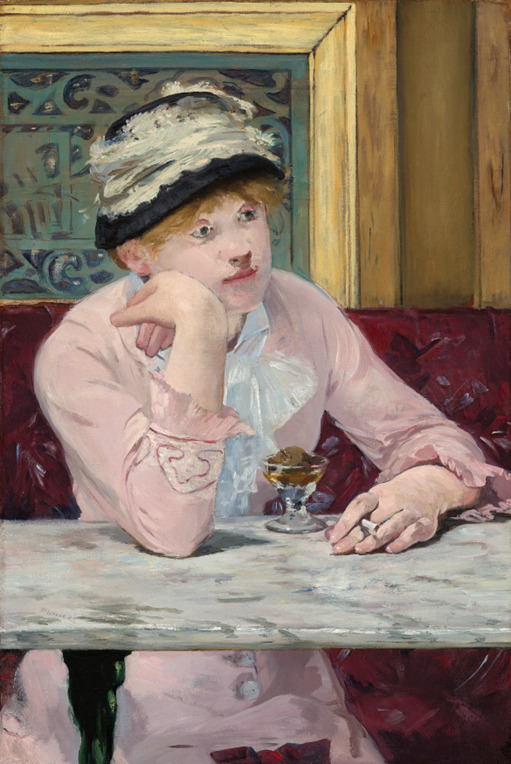
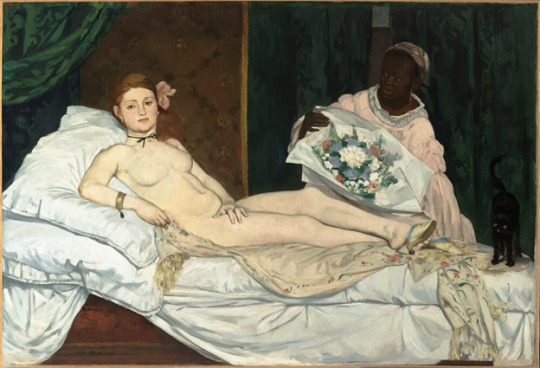




#art history#class essay#undergrad research#edouard manet#manet#oil painting#impressionism#paris#french art#19th century#art#artwork#history#french culture
6 notes
·
View notes
Text
3 September 2023 - Olympia
We woke up this morning in Olympia and ate breakfast in the hotel we were staying at. We left around 8 am for the Olympic site. We arrived and started walking around the site. It has lots of greenery and trees that are kept continually watered. This is to keep them damp so they are less vulnerable to fire. Kalliope told us that over the course of a tour she gave, one person counted over 1600 shrines across the places they had travelled over a period of 4 days.
Once inside the site, we went to the left where the temples to Hera and Gaia were. After that we saw a fountain that was made by the Romans. You can distinguish between Roman and Grecian buildings because the Greeks used local stone, which was full of fossils and shells, and was porous, while the Romans used small red bricks and mortar. There were several instances where the Romans had gone and added to Greek-made buildings, resulting in a combination of stones and bricks. After the fountain we went over to the field, where the races were run. The 4 girls + Mrs Poe and Elise raced two thirds the length of the field, and Mrs Poe was the victor. Next, all 7 guys and Dr. Depoe raced the full length of the field. Ryan won, followed by Caleb and then Josh.
Following the field we went and saw several miscellaneous buildings, including a dining hall and judge’s quarters. Next up was the huge temple to Zeus, with the columns fallen in ruins around it, and the one restored pillar towering over the group. After that we went and saw Phidias’s workshop, which was later converted into an early church. That structure was one that had a mixture of Greek stones and Roman bricks. We then saw the places were athletes trained, and learned about how some pillars were ionic and some were Doric. This was because the site was restored over time as the columns evolved.
After we finished touring the site, we went and visited an olive oil tasting place, with a souvenir shop conjoined. Brett bought a bronze cast blunt sword which with a leaflike blade and a black grip. We then had lunch at the restaurant around the corner from the shop, then after a brief time of sitting around (and petting a local cat who was quite friendly) we boarded the bus and began the lengthy drive back to Athens.
— Jacob Pfannenstiel
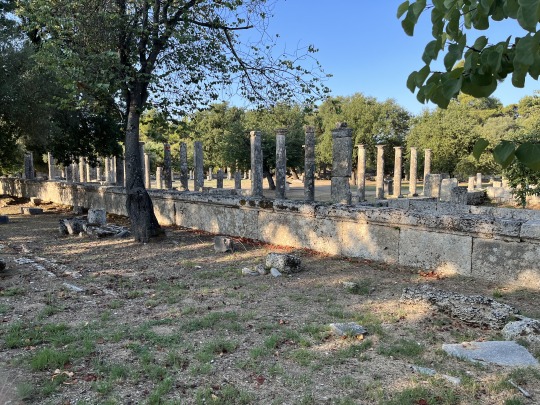

4 notes
·
View notes
Text
The Monty and Capp feud
This is my take on the feud in Veronaville, heavily inspired by Cornyregans work.
The Montys are an ancient family established throughout Olympia. You can find their tracks in Veronaville, Monte Vista or more recently in Tartosa. It’s there that the family heirs currently reside in. But the story began in Veronaville, where Patrizio and Isabella are From.
The oldest living generation of the Monty family grew up in the countryside of Monte Vista. Patrizio was then the best friend of Consort Thebe and a close friend of Isabella Pantalone and Cressida Capp (it’s how I rename Contessa Capp). The four of them grew up together. However, a dispute between their respective families erupted when they became teenagers: Patrizio and Cressida wanted to marry, but her family refused to let their only heiress become a Monty; the Capp family preferred to see her marry Consort Thebe whose family is matriarchal so that the name Capp could endure.
But the will of each family, the Capp, Thebe and Monty is not what undermined the friendship that united Cressida, Patrizio and Consort. Because Consort promised to his best friend Patrizio that he would not marry Cressida and that the couple could live together. But over time, Cressida realized that while she enjoyed spending time with Patrizio, he wasn't the one she saw herself marrying. Consort then imposed itself as a rational decision for her, as her family decided. And then Cressida and Consort had much more in common.
Then Consort’s parents and Cressida’s mother died, so the two became much closer. And Cressida decided it was time to end her relationship with Patrizio. He had a lot of resentment towards Consort and felt betrayed to see his sweetheart leave him to go in the arms of his best friend. The friendship between the three of them took a hit.
Isabella then spent a lot of time with her friend Patrizio to cheer him up. She even offered him a job at his parents' company in Monte Vista to change his mind. Both became very talented chefs in the Pantalones' family restaurant. And then they decided to open their own restaurant in Veronaville. But all they shared was more than friendship by now. Both felt a strong bond between them. They eventually married, and their restaurant became their new family business.
It was shortly after that their children Claudio, Antonio and Bianca Monty were born. The couple then created a loving home to raise them, forgetting Patrizio's resentment towards his former friends Consort and Cressida. He reconnected with them, missing what they shared back then.
When Claudio became an adult, he married the love of his life, Olivia Dottore. They then continued to look after the family restaurant with Isabella and Patrizio. Together they had three children, Mercutio, Romeo and Viola; and their mother Olivia were pregnant with their last little sister, Sebastiana. Romeo had even fallen in love with Consort's granddaughter, Juliet Capp. They started dating.
Since the third generation of Monty and Capp have reconciled, it was not uncommon to meet the formerly rival family in Olivia and Claudio's restaurant. It was even there that Consort's son, Caliban, and his wife Cordelia decided to celebrate their wedding anniversary. But everything did not go as well as the couple had hoped. A fire broke out in the restaurant and took several lives, including Caliban and Cordelia—leaving their children Tybalt, Juliette and Hermia orphaned. Consort and Camilla were furious with the Monty family. Although it was a tragic accident that Claudio and Olivia could not have avoided.
It was said all over Veronaville that the Monty family was responsible for the tragedy that stroke the Capp. The restaurant had been closed for a long time, first to let the police investigate, then because of the necessary repairs. However, Claudio did not want to return to work. He was so anxious about all the Capp accusations running all over town, that he didn't even believe the police and firefighters who determined that the fire was accidental. He wanted to make his parents proud, blamed himself for the collapse of the family business they had founded. And he also felt guilty towards his son Romeo because he couldn’t see Juliette anymore; and for her, deprived of her parents. She was now raised by Consort and Cressida.
Claudio Monty then came to neglect his health, even his most important needs. He died of starvation and exhaustion just one month after the tragedy. His wife Olivia, overwhelmed by sadness, could not put her pregnancy to term. She died of complications a few days after her husband. No one thought the feud between Monty and Capp could be worse than it was then. And yet it got even worse, taking Claudio's sister-in-law, Heroisa Monty’s life. Antonio's wife was so overwhelmed by what was happening that the depression she was fighting had finally won over her. She let herself drown in the pool recently built by her family. Antonio had now to raise his two children alone, Benny and Beatrice.
Although everyone would disapprove of Romeo and Juliet's relationship in Veronaville, that didn't stop them to see each other. Juliette wanted to honor the memory of her mother, who wanted her daughter a happy marriage with the one she had chosen. And this one happened to be Romeo. Cordelia wanted her daughter to be free of the Capp’s tradition, unlike his grandmother Cressida and his aunt Goneril who had to marry out of interest because they were the heiresses of the Capp family—even though Cressida was now blessed.
In this feud, there were still some relatives of the Monty and Capp families who longed for appeasement. Many members of the new generation wanted to be freed from the traditions that obscured their futures. They wanted the feud between Patrizio and Consort Capp to end.
But this was not the case of Tybalt, Juliet's older brother. Since the death of his parents, he could no longer bear to meet the children of those they believed responsible for the fire at school. He hated Monty, and often fought with the Mercutio brothers and Romeo. So when he found out that his sister Juliette was dating one of them... His blood has only made one turn. He immediately came to confront Romeo. After that, he informed Consort of this relationship. Of course, the eldest of the family categorically refused to let his granddaughter date a Monty. But this was not the case with Cressida. Before dying of old age, the matriarch gave her blessing to Juliet, supporting her in her choice just as Cordelia had done before.
#Capp family#Capp#Juliette Capp#Tybalt Capp#Contessa Capp#Monty family#Romeo Monty#Patrizio Monty#Mercutio Monty#Isabella Monty#Isabella Pantalone#Thebe family#Consort Thebe#Consort Capp#Veronaville#Veronaville Feud#sims 2#ts2#the sims 2#s2#cornyregans
10 notes
·
View notes